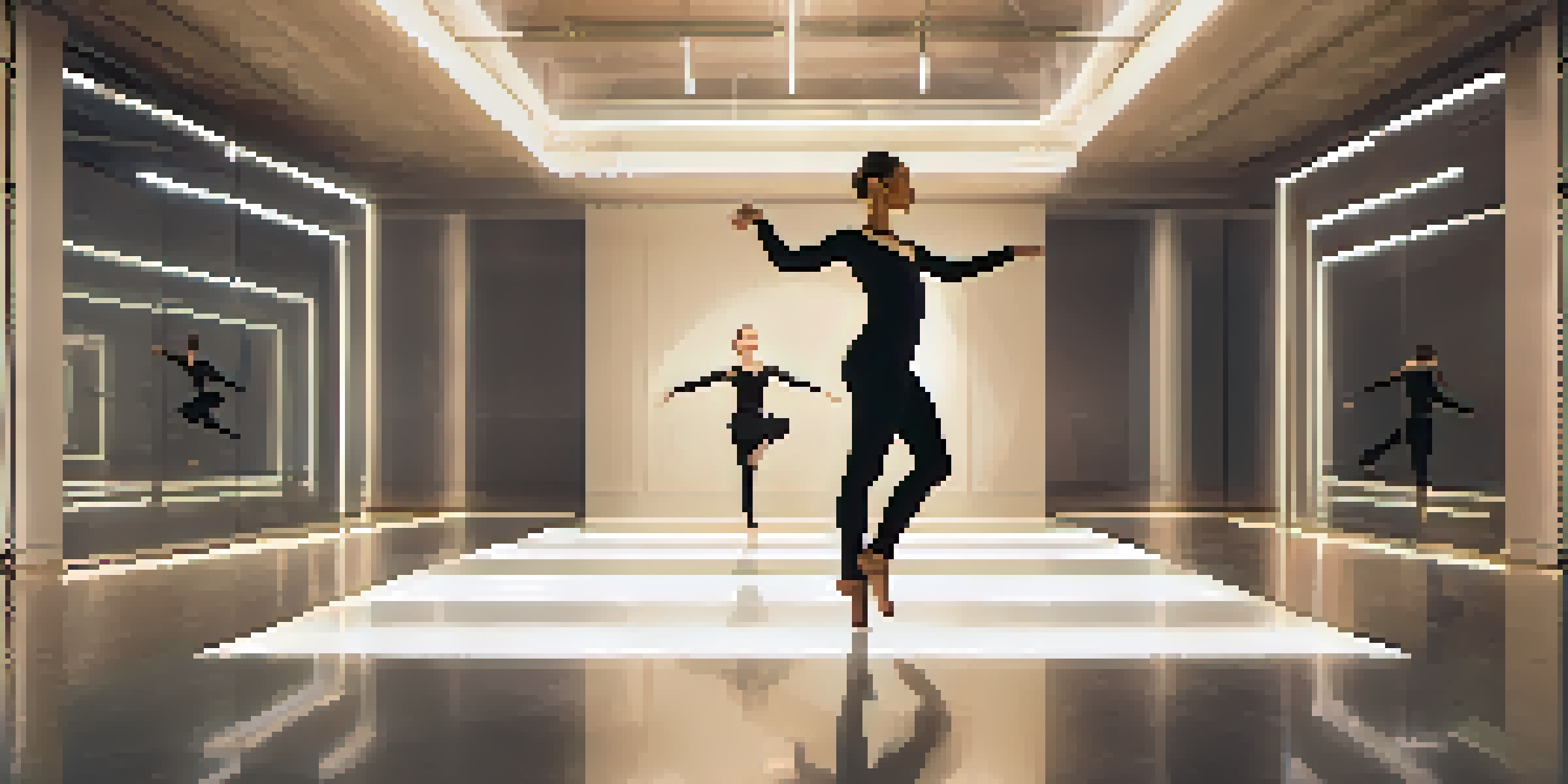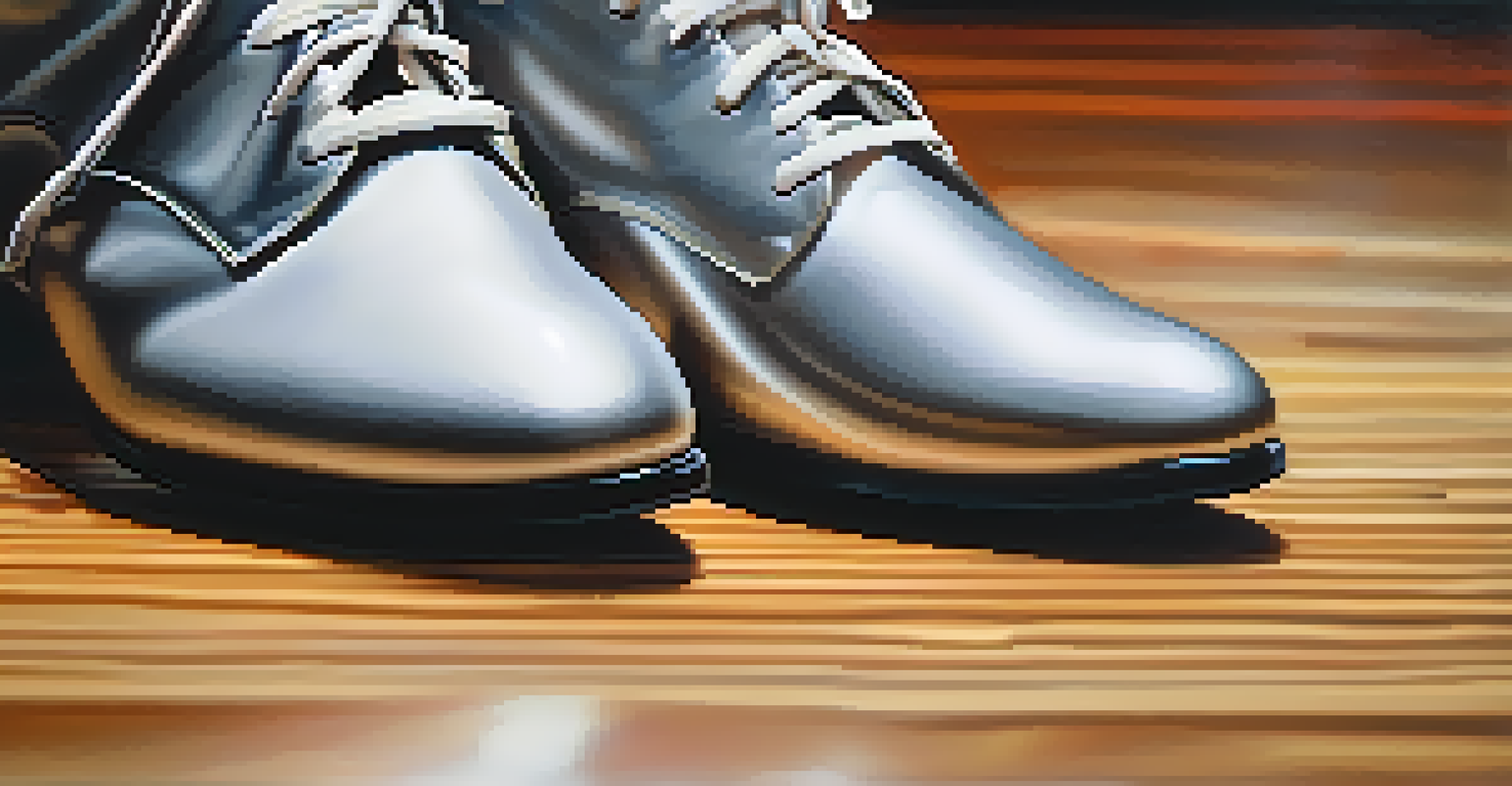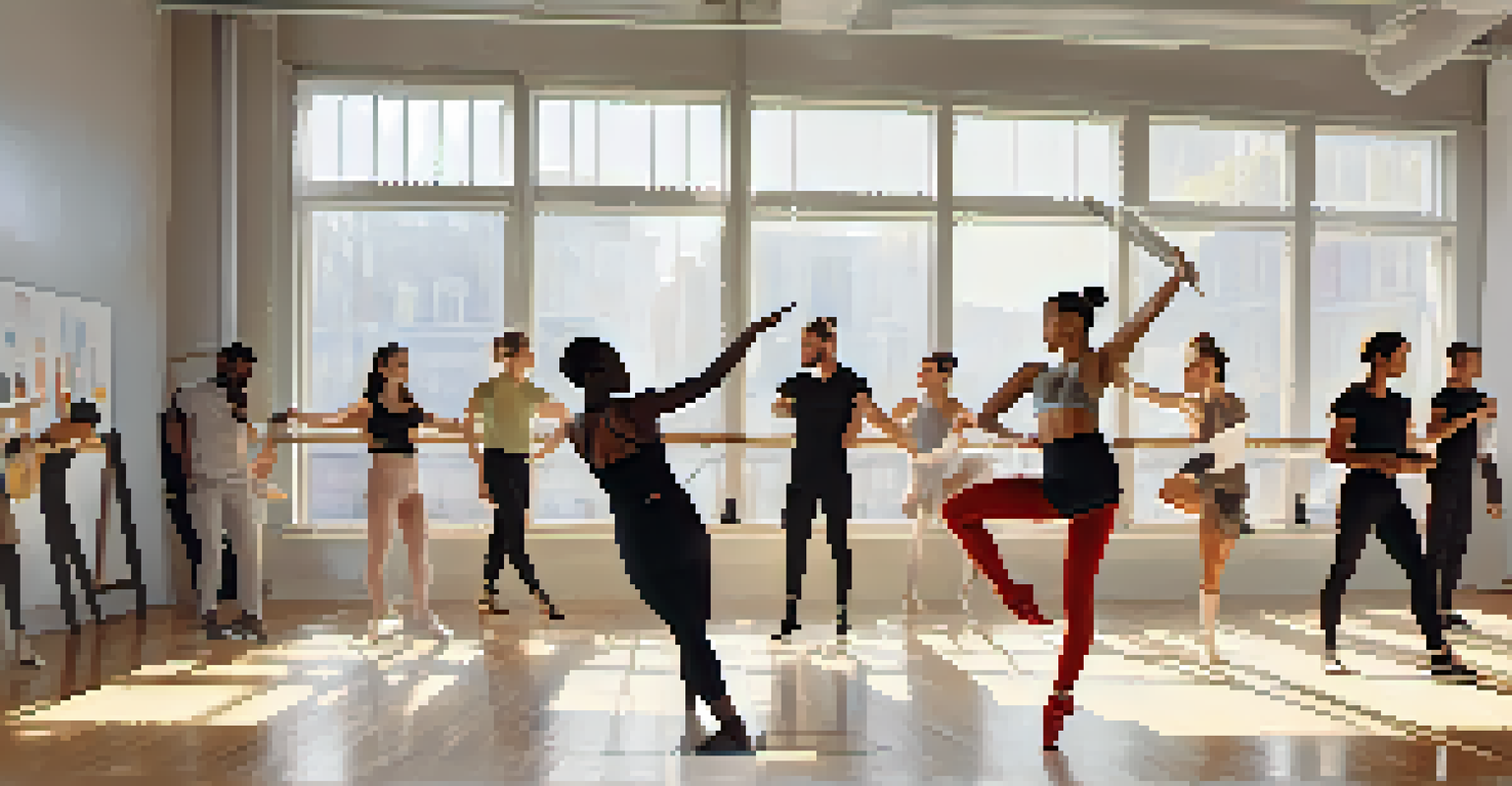Using Wearable Tech to Enhance Dance Training and Performance

Introduction to Wearable Technology in Dance
Wearable technology is revolutionizing various fields, and dance is no exception. These devices, ranging from smartwatches to motion capture suits, are designed to track performance and provide valuable insights to dancers. By integrating these tools into training routines, dancers can enhance their skills, monitor their health, and fine-tune their performances.
Technology is best when it brings people together.
The rise of fitness trackers and smart apparel has made it easier for dancers to stay connected with their physical well-being. They can now collect real-time data on metrics like heart rate, calories burned, and even movement patterns. This information can help dancers understand their bodies better and push their limits safely.
So, why should dancers consider incorporating wearable tech into their training? The answer lies in the ability to blend artistry with science, enabling dancers to achieve their best performance while minimizing the risk of injury.
Benefits of Tracking Performance Metrics
One of the key advantages of wearable tech is the ability to track performance metrics accurately. Devices can monitor movements, rhythm, and even the number of turns or jumps performed during practice. By analyzing this data, dancers can identify areas of improvement and set specific goals for their training.

For instance, a dancer may discover that they consistently lose balance during certain movements. With this knowledge, they can focus on strengthening their core or practicing specific exercises to enhance stability. This data-driven approach not only improves performance but also builds confidence.
Wearable Tech Boosts Dance Performance
Integrating wearable technology allows dancers to track performance metrics, helping them identify areas for improvement and set specific training goals.
Moreover, tracking performance metrics can help dancers celebrate their progress. Whether it's achieving a personal best in jumps or perfecting a challenging routine, having tangible data to reference can motivate dancers to keep pushing their boundaries.
Preventing Injuries with Wearable Technology
Injuries are a common concern for dancers, often stemming from overuse or improper technique. Fortunately, wearable tech can play a crucial role in injury prevention. By monitoring physical exertion and detecting patterns that could lead to strain, these devices can alert dancers to potential risks.
The future belongs to those who believe in the beauty of their dreams.
For example, smart shoes equipped with pressure sensors can analyze how a dancer lands during jumps. If the data indicates excessive pressure on certain joints, the dancer may need to adjust their technique or rest before an injury occurs. This proactive approach can save dancers from the frustration of downtime.
Additionally, some wearables provide feedback on posture and alignment, crucial elements in dance performance. By correcting these aspects in real-time, dancers can ensure they are using their bodies efficiently, further reducing the risk of injury.
Enhancing Communication and Collaboration
Wearable technology can also enhance communication between dancers and their instructors. Many devices allow for seamless sharing of performance data, enabling instructors to provide targeted feedback based on concrete evidence. This collaborative approach can lead to faster improvements and a deeper understanding of the dance form.
Imagine a scenario where a dance teacher can review a student's progress through data collected during practice. The teacher can pinpoint specific areas where the student excels and where they may need additional support. This tailored guidance can make all the difference in a dancer's growth.
Injury Prevention with Smart Devices
Wearable tech can monitor physical exertion and provide feedback on technique, significantly reducing the risk of injuries among dancers.
Furthermore, some wearables come equipped with features that allow dancers to connect with peers, creating a community of support and motivation. Sharing achievements, challenges, and tips can foster a sense of camaraderie and encouragement among dancers.
Real-Time Feedback During Practice
One of the most exciting features of wearable tech is the ability to provide real-time feedback. Dancers can receive instant notifications on their form, timing, and technique as they practice. This immediate input can help them make adjustments on the fly, leading to more productive training sessions.
For example, a dancer wearing a motion capture device may receive alerts if they are not executing a turn correctly. By receiving this feedback in real-time, they can correct their posture or timing immediately, rather than waiting for a later review. This can lead to faster skill acquisition and improved performance quality.
Real-time feedback can also boost motivation, as dancers can see the results of their efforts immediately. With each adjustment leading to improvement, dancers are more likely to stay engaged and committed to their training.
Customizing Dance Training with Data Insights
Every dancer is unique, and their training should reflect that individuality. Wearable technology allows for the customization of training programs based on personal data insights. By understanding their strengths and weaknesses, dancers can create a training routine that best suits their needs.
For instance, if a dancer's data shows they fatigue quickly during rehearsals, they can incorporate specific stamina-building exercises into their routine. This level of customization ensures that training is both effective and enjoyable, catering to each dancer's personal journey.
Real-Time Feedback Enhances Training
Dancers benefit from real-time feedback through wearables, enabling immediate adjustments that lead to more effective and engaging practice sessions.
Additionally, by revisiting data over time, dancers can adjust their programs as they progress. This adaptability keeps the training fresh and challenging, essential for continued growth and motivation.
The Future of Dance Training with Wearable Tech
As technology continues to advance, the possibilities for wearable tech in dance training are endless. Innovations such as augmented reality (AR) and virtual reality (VR) may soon become commonplace, allowing dancers to experience immersive training environments. Imagine practicing alongside holographic instructors or competing in virtual dance-offs!
Moreover, the integration of artificial intelligence (AI) could further enhance training by providing predictive analytics. Dancers may receive personalized recommendations based on their historical performance data, helping them stay ahead of the curve.

Ultimately, the future of dance training with wearable tech is bright. As these tools evolve, they will continue to empower dancers to reach new heights, blending artistry with cutting-edge science.